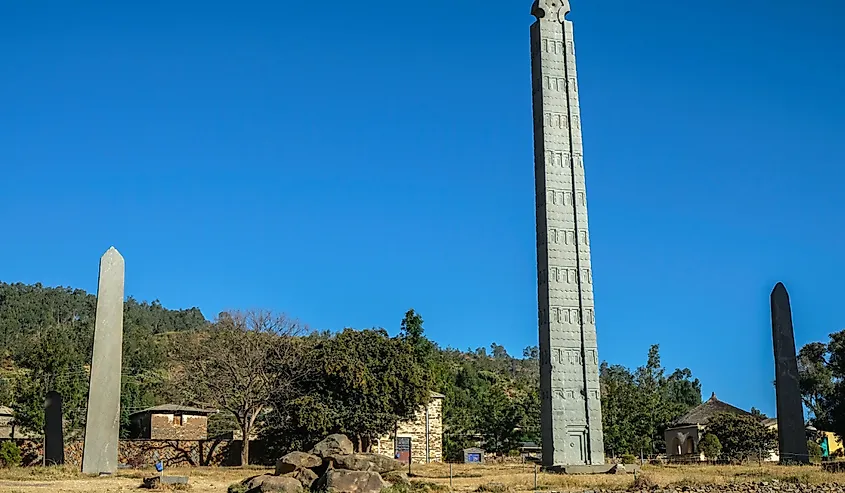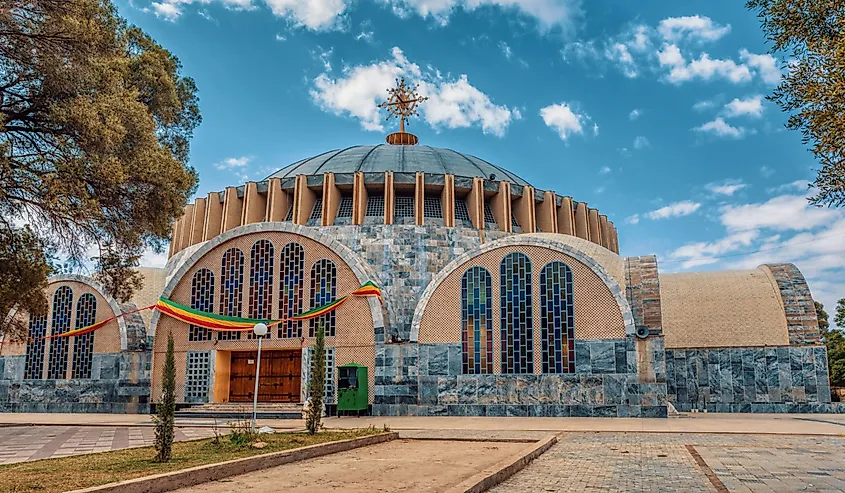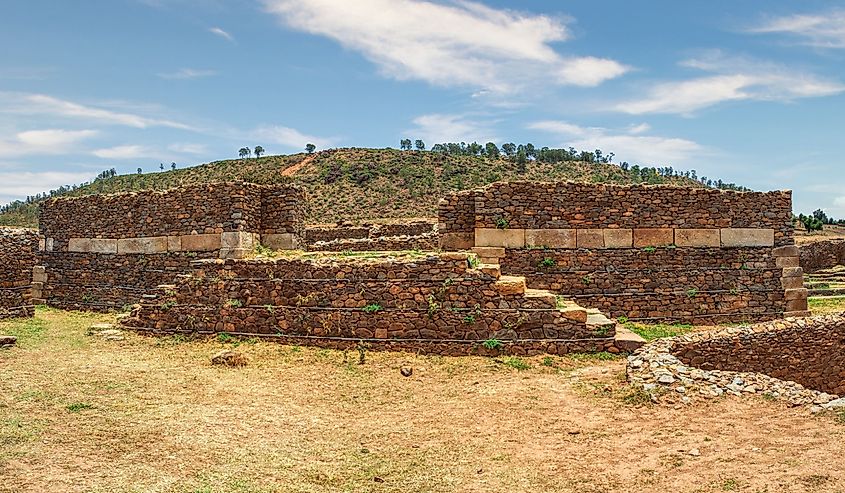
The Little Known Eastern African Empire That Rivalled Rome In Its Time
The world that existed on the peripheries of the Roman Empire is seldom discussed. Of the countless civilizations that dwelled just beyond their borders, only a few get a brief mention in popular culture. The Persians, Carthaginians, and Barbarian tribes are the most common groups studied. However, there is one nation that is often overlooked time and time again; The Kingdom of Aksum.
Controlling the area of modern Ethiopia, Eritrea, Sudan, Somalia, Somaliland, Djibouti, and Yemen, the Aksumites built a powerful mercantile empire that remained a serious player in the ancient world for centuries.
Early Years - 1st Century CE

The early years of Aksum started out in a region within Ethiopia called Tigray. Located deep in the highlands, the city that would one day bare the name of this great kingdom took shape. Its strategic positioning made attacks from aggressive neighbors almost impossible. It also situated itself on the roads of major trade networks into Europe, India, and the Middle East.
It was once believed that Aksum owed its foundation to the migration of the Semitic Sabaean tribes which moved and settled the area after crossing over from the Arabian Penisula. Thanks to the work of archeologists and historians, it is now clear that Aksum grew out of local villages and towns.
Trade and Wealth 200 CE - 400 CE

Trade was at the heart of Aksum. Taking full advantage of its geographical location, the Aksumites were quick to expand their commercial influence wherever they could. The wealth generated from trading made Aksum rich and the city grew exponentially.
During this economic boom, the Aksum people came into contact with the Roman Empire which had just toppled the Ptolemaic dynasty in Egypt. Despite the warlike tendencies of the Romans, it was clear to both parties that trade agreements would be more beneficial than needless conflict.
Christianity 4th Century CE

With such close proximity to the Middle East and the Roman Empire, Aksum was one of the first nations to convert to Christianity. According to legend, two Christian Syrian boys named Frumenius and Aedesius shipwrecked near the Aksumite city of Adulis.
After the boys gained his favor, King Ezana converted to Christianity in 340 CE. Initially, the newfound religion was only popular among the Aksumite elite. However, after a few decades of proselytizing from missionaries and the construction of churches, the masses soon followed their monarch.
Aksum, now modern-day Ethiopia, remains one of the oldest Christian nations in modern times. As claimed by some Christian officials, the long-lost Ark of the Covenant is in the Church of St. Mary of Zion in Aksum, guarded to this day.
War and Expansion 300 CE - 600 CE

While the Aksumites were able to avoid war with the Romans, they did not shy away from violence with other nations. Aksum conquered the competing African trade city of Meroe, present-day Sudan, in the 4th century, securing trade heading into Egypt and Rome.
Aksum expanded as far as Yemen and the Arabian Peninsula in the 6th century reducing the once mighty Himyar to a vassal state. This only served as another strategic location to sell their much sought-after ivory and gold to distant markets.
Collapse and Isolation 600 CE - 800 CE

Despite a series of military victories in Arabia and the start of what might have been a second golden age in the early 600s, Aksum's hold quickly shrank. The Sassanid Persians pushed the Aksumites out of Himyar (Yemen) and Aksum was forever relegated to East Africa.
As the Muslim conquests of Arabia, the Middle East, and North Africa took shape in the 7th and 8th centuries, Aksum became economically and politically isolated. Surrounded by hostile Muslim nations and cut off from many of its lucrative trade routes, Aksum gradually and inevitably declined.
Forced deeper into the Ethiopian Plateau, the Aksumites were unable to regain a meaningful presence on the coast of the Red Sea or the Indian Ocean. Due to the easily defendable nature of Ethiopia, the various successors to the Aksumite Kingdom were able to stave off Muslim invaders and remain Christian, but would never regain the influence or prominence of Aksum.
Summary
Despite its vibrant culture and rich history, Aksum and by extension, Ethiopia is often overlooked. Ethiopia stands out in East Africa today as one of the few Christian nations in the region left standing, and host to some of the most remarkable churches on the planet. Carved out of rock surfaces, the churches at Lalibela are worth your attention.











